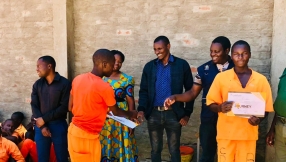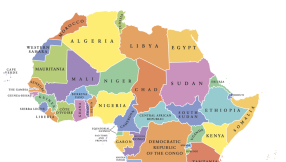A Bangladeshi revival
I was fortunate to have attended an ‘annual revival meeting’, which is a bit like your typical Christian family conference in the UK such as Spring Harvest or New Wine. These are held in each deanery of the Church of Bangladesh every year, with guest speakers, cultural programmes, children’s events, worship and communion.
The one I attended this year was the Helmel, which means ‘fellowship’ in the Santali language. We arrived during my favourite part of the cultural programme, the ground reverberating with the sound of the heavy Santal drums, melodic rhythmic singing acting as an accompaniment along with the sound of the tabla and harmonium, colour flashing before my eyes as groups of brightly attired young people – both boys and girls – danced, moving their feet in complex patterns, while the crowd under the shamiana clapped and shouted their approval.
To me this was church at its best, embedded in local culture, enjoying being together and praising God with spiritual as well as traditional songs offered by each village in turn with all of their energy. What was nice to find out from Bishop Mankhin who sat next to me was that despite it being an annual event, people from two or three villages were attending for the first time as Rajshahi Deanery is the fastest growing part of the Church of Bangladesh.
Last year these villages did not even have churches, but since 2009 seven new churches – with a combined membership of over 700 people – have been started! CMS has paid for the full cost of the building of several of these village churches and would welcome further support to help build new ones. So while many churches in Europe continue to decline, the rapid growth of Christians in this area might appear surprising and as I recently helped the Dean to prepare a project proposal, I was fascinated to learn more.
The Santal community formerly worshipped nature (animists), following some Hindu traditions, and were tribal and nomadic. They moved around the forests of what is now north-western Bangladesh, south-eastern Nepal and northern India, hunting, gathering wild vegetables and practising shifting cultivation. However, the spread of settled agriculturalists eroded their resources and they lost their land so that today in the Rajshahi area the majority of Santal people are casual day labourers, reduced to poverty. On top of this they are looked down upon for being members of a minority religion within Bangladesh (Christians or Animists), considered lower caste and despised by all on account of their lowly work and darker skin colour (darkened by days spent in the blazing sun).
But it seems the church is meeting the needs of these people at a number of different levels. For one, it has helped with their practical needs; secondly it teaches them that they have a value in God’s eyes (they should be proud as God created them good and equal to any person), and thirdly it gives them a vibrant spirituality.
Munsi Murmo of Babuldang village says the arrival of Christianity has changed the life of his society in many positive ways: “It has improved the life of the community and being part of a larger Christian community, we feel less isolated. Now there are less people drinking and getting drunk on rice wine, there is less quarrelling between neighbours and people have stopped smoking cannabis/hashish.
"Before, although I prayed as part of the traditional religion, I didn’t know God and experienced nothing, but now I feel God in my heart, mind and family. We feel God is with us giving us inner strength.”
Derin of Nimgutu village said: “Before when I did ‘puja’ worship it was useless, there was no effect whatsoever, but now when I get sick I come to church, I am prayed for and I get healed.” I have seen no poorer villages in my visits through Asia, Africa and Europe than these Santal ones.













